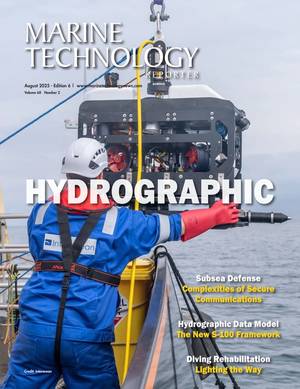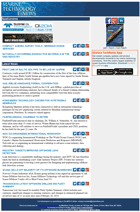
Antarctica Undergoing Abrupt Change
Antarctica and the Southern Ocean are experiencing abrupt changes due to human-caused climate change, according to research published in Nature on Thursday.The research review, led by Professor Nerilie Abram from the Australian National University (now Australian Antarctic Division Chief Scientist), shows that multiple rapid changes across the Antarctic environment are already underway, or imminent.These abrupt changes include a rapid decline in sea-ice coverage, weakening of ice sheet and ice shelf stability, and population declines in some marine and terrestrial species, due to habitat loss.“Hum

Rapid Loss of Antarctic Ice Might Signal Climate Tipping Point
that draw down vast quantities of carbon from the atmosphere, the study said."Antarctic sea ice may actually be one of those tipping points in the Earth's system," said Abram, a former professor at the Australian National University (ANU) and now chief scientist at the Australian Antarctic Division.Reining in global carbon dioxide emissions would reduce the risk of major changes in the Antarctic but still may not prevent them, the study said."Once we start losing Antarctic sea ice, we set in train this self-perpetuating process," Abram said. "Even if we stabilise

Australian Researchers Head to Heard Island
This year, the Australian Antarctic Division will lead expeditioners and scientists working with the Australian Antarctic Program on two voyages to Heard Island and McDonald Islands.Heard Island is a land of fire and ice, home to Australia’s only active volcano, with 12 major glaciers carving through the landscape and penguin and seal colonies dotting the coastline.With the nearby McDonald Islands, they are one of Australia’s most remote territories, located in the southern Indian Ocean, 4,000km south-west of the Australian mainland.The campaign, using Australia's icebreaker, RSV Nuyina

Concern Raised for Major Shift in Antarctic Sea-Ice Coverage
stations. There could also be increased shipping pressures on the continent, including from alien species incursions, fuel spills and an increase in the number and movement of tourist vessels to and from new locations.Research co-author and sea-ice system expert, Dr Petra Heil, from the Australian Antarctic Division, said the paper highlighted the need for ongoing, year-round, field-based and satellite measurements of circumpolar sea-ice variables (especially thickness), and sub-surface ocean variables.This would allow integrated analyses of the Southern Ocean processes contributing to the recent

Australian Antarctic Program Appoints Chief Scientist
possibilities that we haven’t seen before,” she said.“The way that the Australian Antarctic science community has come together around major campaign-style research priorities offers a new way of tackling really big and important science problems.”The Head of the Australian Antarctic Division, Emma Campbell, said Professor Abram will be a welcome addition to the Science branch of the Division.“Professor Abram will be playing a key role in what will be a crucial time for Antarctic and Southern Ocean science,” she said. “We are planning the first environmental

Denman Glacier Has Already Lost Over 250 Billion Tons of Ice
can be controlled remotely by colleagues working in the United States.A key aim of the research being conducted onboard Nuyina is to quantify how much the glacier might contribute to rising sea levels in a warming climate in the centuries to come.The voyage is a collaboration between the Australian Antarctic Division, Securing Antarctica's Environmental Future (SAEF), the Australian Centre for Excellence in Antarctic Science (ACEAS) and the Australian Antarctic Program Partnership (AAPP)

Dancing Krill
Chase, probe, embrace, flex, push. It’s probably too much information, but that is how krill mate.The behavior was recorded on a deepsea camera 500 meters below the surface of the Southern Ocean back in 2011 by Australian Antarctic Division researchers – who then made an animated illustration of this special “dance.”Krill can change from adults to juveniles, and they can survive over 200 days of starvation, reducing their size by using their own body proteins rather than molting their exoskeleton.They are known for being an important food source for whales, seals and penguins

Reseach Finds Fin Whale Songs Shed Light on Migration Patterns
being intrusive.“The Southern Hemisphere fin whale is a vulnerable sub-species and this method of tracking, whereby microphones are deployed in the deep sea, allows us to observe and map their movements with little disruption,” Professor Erbe said.“Acousticians from the Australian Antarctic Division (AAD) were instrumental in helping us conduct this research, recording almost a million calls at frequencies of 20Hz, which is too low for humans to hear.“This collaboration and expertise allows researchers to listen in to where the whales are going and why, better informing us

Clark Named Chair of the Australian Antarctic Science Council
The Australian Antarctic Science Council has a new Chair, with the appointment of Philip Clark AO to lead the organization. The Council was established in 2019 to provide independent advice to Government on the priorities of the Australian Antarctic Science Program.Director of the Australian Antarctic Division, Kim Ellis, said Clark brings a wealth of experience to the role. “I am really excited to have Mr. Clark take on this leadership role in such a pivotal time for Antarctic and Southern Ocean research. Mr. Clark has worked in leadership and governance roles in government, universities

 August 2025
August 2025




